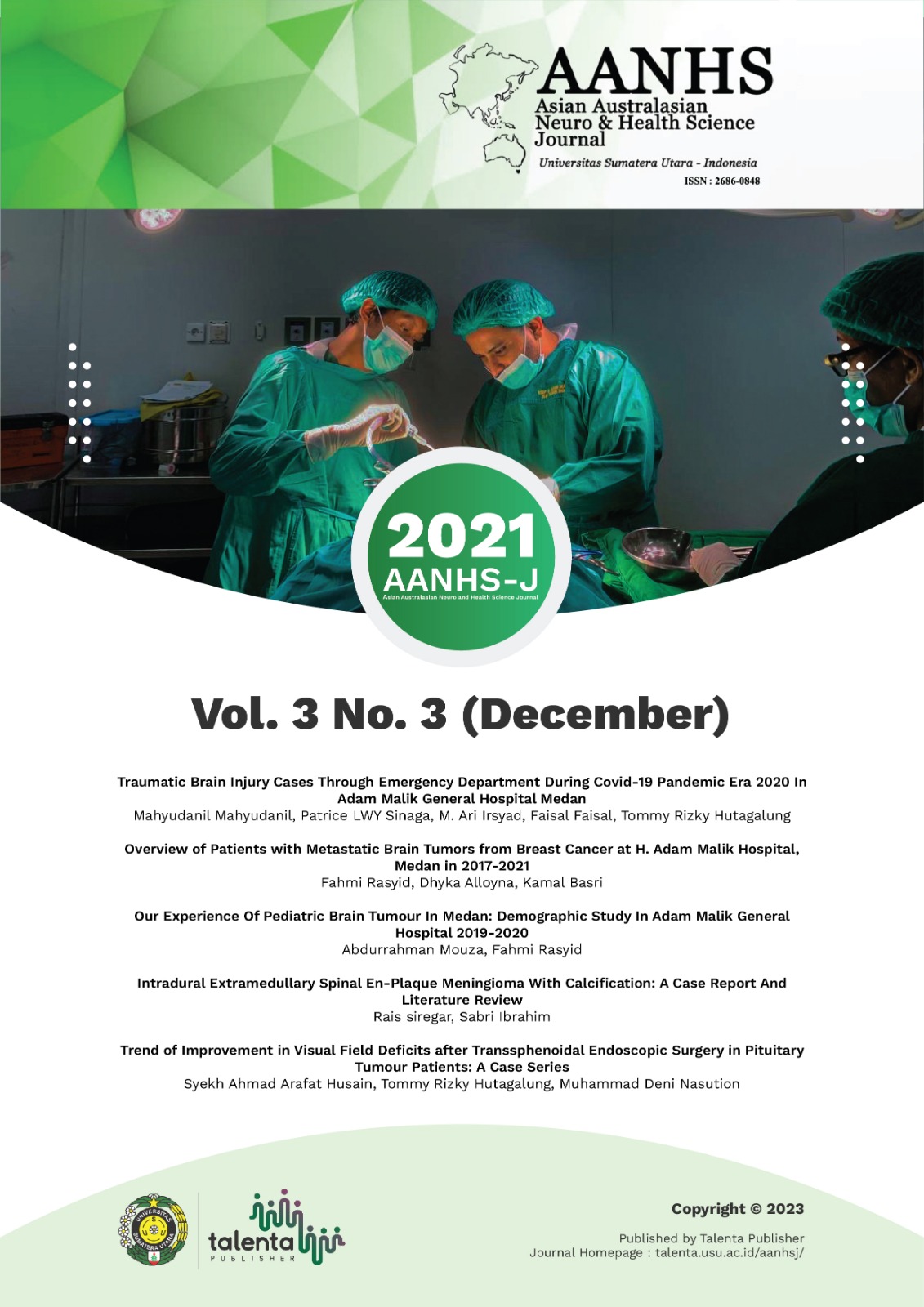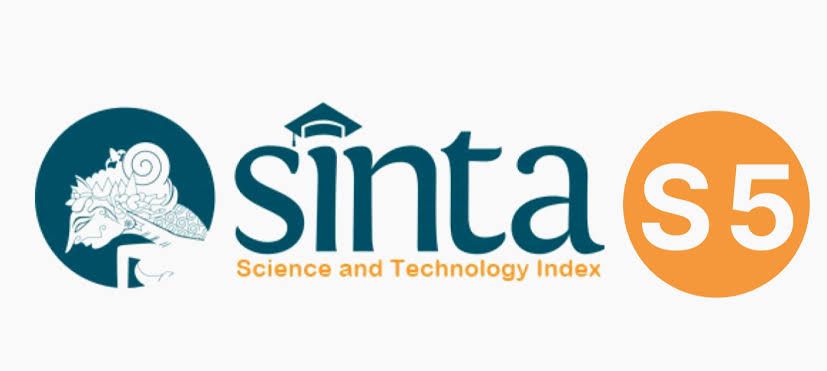Overview of Patients with Metastatic Brain Tumors from Breast Cancer at H. Adam Malik Hospital, Medan in 2017-2021
DOI:
https://doi.org/10.32734/aanhsj.v3i3.7581Keywords:
breast cancer, brain metastasis, hormonal therapyAbstract
Abstract
Introduction: The incidence of breast cancer based on Globocan in 2018, reached 2,088,849 cases (11.6%), with a mortality rate of 626,679 cases (6.6%). Breast cancer is one of the most common causes of a metastatic brain tumor. Approximately 10%-16% of patients with breast cancer develop brain metastases during the course of their disease. Current case management guidelines for patients with metastatic brain tumors from breast cancer are radiotherapy to the entire brain, with or without surgical resection, or stereotactic radiosurgery. Hormone receptor ([HR]; estrogen receptor [ER], progesterone receptor [PR]) and HER2 expression serve as predictors of response to hormone-targeted therapy and HER2, respectively.
Method: The study was a descriptive study with a retrospective cohort design in which the researchers identified 78 patients with breast cancer brain metastases (either for diagnostic purposes or for therapeutic purposes at RSUP HAM Medan between 2017 and 2021. Data were collected from SIRS RSUP HAM Medan. Data related to clinicopathology were collected from medical records, including demographic characteristics, tumor characteristics, biomarker status, recurrence of metastatic brain tumors based on Magnetic Resonance Imaging (MRI) examination, and data on therapeutic regimens in cases of brain metastases of breast cancer. ER and PR status were determined by immunohistochemical examination. the intensity of the HER2 3+ immunohistochemical staining was considered positive
Result: The mean age at breast cancer diagnosis was 46 years (range: 24-73 years). Most patients had invasive ductal histology (n=73, 94%). In addition, 56% of patients had T3 (n=34) T4 disease in 56% of patients (n=44) and 68% of patients (n=53) had positive axillary lymph nodes. Among patients with known HR and HER2 status, a total of 56% of tumors were ER negative (ER-; n=44), 62% were PR negative (n=48), and 44% were HER2-positive (HER2+; n= 34). With regard to the four subtypes formed by the combined values of HR and HER2 status, 21% (n=16) of tumors were HR+HER2+, 27% (n=21) were HR+HER2-, 23% (n=18) were HR+/ HER2-, and 28% (n=23) were triple negative (TN).
Discussion: In the current study, investigators found that apart from patient age and number of brain metastases, HER2 status was a strong predictor of survival outcome after brain metastases. Patients with HER2-positive characteristics had a longer life expectancy than patients with HER2-negative disease. Considering the intracranial antitumor effect of anti-HER2 therapy, it is important to establish HER2 status not only in primary tumors but also in brain metastases to aid in consideration of the choice of therapeutic modality
Conclusion: This study showed that younger age, brain metastases from solitary breast cancer, and HER2 positive from breast tumors were independent predictors of better survival in patients with breast cancer brain metastases
Downloads
Downloads
Published
How to Cite
Issue
Section
License
Copyright (c) 2021 Asian Australasian Neuro and Health Science Journal (AANHS-J)

This work is licensed under a Creative Commons Attribution-NonCommercial-NoDerivatives 4.0 International License.
The Authors submitting a manuscript do understand that if the manuscript was accepted for publication, the copyright of the article shall be assigned to AANHS Journal.
The copyright encompasses exclusive rights to reproduce and deliver the article in all forms and media. The reproduction of any part of this journal, its storage in databases and its transmission by any form or media will be allowed only with a written permission from Asian Australasian Neuro and Health Science Journal (AANHSJ).
The Copyright Transfer Form can be downloaded here.
The Copyright form should be signed originally and sent to the Editorial Office in the form of original mail or scanned document.














